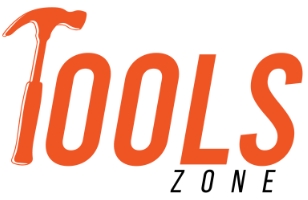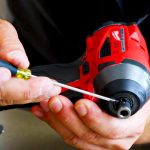Milwaukee has always been a popular and trustworthy name in the world of electric power tools and accessories. From DIY enthusiasts to professional workers, everyone relies on Milwaukee in their Jobsite and small projects. However, like any other successful organization, the road to this tremendous success for Milwaukee wasn’t a bed of roses for the company itself.
When World War I was coming to an end, automotive tycoon Henry Ford approached fabricators to produce a compact, lightweight, and portable one-by-4-inch power drill. A. H. Petersen seized the moment and manufactured the tool that everyone knew back then as Hole-Shooter. It was the first industrial drill that could be held in one hand and was able to carry out heavy-duty workloads. Four years later, Albert F. Siebert joined Peterson and founded the A.H. Peterson Company. Unfortunately, a fire disaster took place, and the company shut down completely.
Siebert bought the rest of the company’s shares through auction and launched it as Milwaukee Electric Tool Corporation in 1924. The company started its journey with the goal mind to deliver the best heavy-duty power tools and accessories for working professionals. Their target was to increase productivity and ensure unmatched durability no matter which product they invented. In the early days, Milwaukee kept repairing existing tools rather than manufacturing new ones to keep itself in the race. They invested hours researching the shortcomings of the existing tools to have a clear vision of customer demand and fill up the gap.
With that mindset, they made a couple of changes and improvements to the Hole-Shooter, and soon the change grabbed everyone’s attention. In 1930, Milwaukee Tools obtained equipment specification ratings from the US government and started applying Navy Standards in their tools. After that, they started manufacturing portable hand grinders, electric hammers, and so on. During World War II, the United States Navy placed a significant number of orders as they were fully satisfied with the quality tools Milwaukee produced for them.

In 1949, they took their Grinders to the next level by adding a spring clutch. In the same year, Milwaukee invented the first two-inch right Angle Drill, which allowed electricians and plumbers to drill holes in different materials like wood, steel, etc. Soon after that, in 1952, the company unveiled the Sawzall Reciprocating Saw which was compatible with a full line of blades and versatile enough to cut through a variety of materials.
During the 60s and 70s, Milwaukee steadily expanded both its manufacturing facility as well as product lineup. And they shifted to a modern 212,000 square feet manufacturing and office facility in Brookfield in 1965. The 1970s have been significant for the company as it introduced new products to the world. First, they invented the Hole Hawg, the first drill that could make large holes between studs and joists in residential construction. Then they introduced the first two-inch Magnum Hole Shooter with the Quik-Lok cord and easily changeable brushes. Then in 1979, they again manufactured the first two-inch angle grinder.
Every year they brought exciting changes to their product lineup and continued through the 90s. Finally, after a gap, they again introduced a 7 and 1 4-inch tilt lock Circular Saw in 1999, which was lighter, more powerful, and more manageable as well.
During the 2000s, Cordless Power Tools were getting more popular day by day. But Milwaukee didn’t rush to create a powerful tool that didn’t match their reputation and waited for perfection in this field. So in 2005, they announced their entrance into the cordless industry and introduced their own lithium-ion battery technology. Sooner they kept on expanding their product based on their battery technology and cordless design.
Since 2007, they have switched their attention towards disruptive innovation. In order to analyze market demand and understand the needs of the customers, they sent company people out in the field to have a live experience. They worked closely with the workers and distributed prototypes to gather their reactions and share their experiences before reaching mass production.
Milwaukee still follows the same pattern to deliver a safer and more productive job site. In 2010 they enhanced the battery by introducing the Red Lithium-ion Battery Technology. This technology has an overall 40% improvement in battery power compared to previous ones. Also, they explored fuel technology that diverted their red lithium battery in three ways: increasing battery capacity, electric motor, tools, and installing motor chips that act as a middle interface between the tool and the battery.
So that was all about the history of Milwaukee Electric Power Tools. Currently, they are dominating the market worldwide with their leading M12 and M18 Cordless system that has produced ground-breaking performance in every job site they entered. Whether it’s their innovative hand tools, storage products, or even their most popular M12 and M18 Fuel products, they are always prepared to deliver a continuous flow of innovative and solid solutions whenever you need them.










Leave a Comment